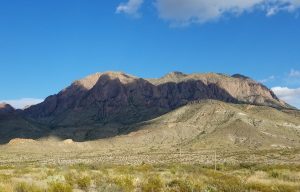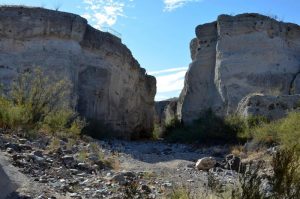 Ross Maxwell Scenic Drive
Ross Maxwell Scenic Drive
The Ross Maxwell Scenic Drive is named for Big Bend National Park’s first superintendent and geologist who served from 1944-1952. He laid out the route to highlight the more spectacular geologic features on the west side of the park. The road heads between Burro Mesa and Chisos Mountains.
 Burro Mesa
Burro Mesa
A plethora of scenic views rewarded us on our return. Burro Mesa is a gently westward-sloping mesa standing high above the surrounding desert floor. At its highest point the mesa reaches an elevation of 4,431 feet above sea level. Its name derives from the many wild burros that once wandered and grazed there.
Tuff Canyon
Tuff Canyon was carved out of soft volcanic tuff (compressed ash). Other rock formations in the area were made from igneous rock. Clear evidence that volcanoes helped shape Big Bend.
Blue Creek Ranch Overlook 
This overlooks provides a view of the headquarters of the Homer Wilson Ranch, one of the largest in the region prior to the
establishment of the park.
 Mule Ears Viewpoint
Mule Ears Viewpoint
We stopped at Mule Ears Viewpoint, a beautiful viewpoint along the Ross Maxwell Scenic Drive. From the parking area, the Mule Ears Peaks dominate the view. A 2-mile long trail leads to
a delightful desert spring.
 Back to Alpine
Back to Alpine
Despite the threat of thunderstorms we had nothing but clear blue skies today. Returning to our hotel in Alpine a few cumulus clouds appeared and we were rewarded with a spectacular sunset over the mountains. It was a glorious finish to a beautiful day.
Willie Hugh Nelson (born April 29, 1933) is an American musician, singer, songwriter, author, poet, actor, and activist. He was one of the main figures of outlaw country trauma, a subgenre of country music that developed in the late 1960s as a reaction to the conservative restrictions of the Nashville sound.

Beautiful sunset pic!
A good place to forget your troubles, not to mention “Blue Skies”